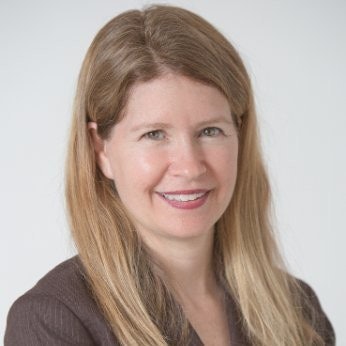Despite universities’ efforts to recruit diverse student bodies, members of different demographic groups remain susceptible to avoiding “the other.”
That situation is particularly striking at this moment on college campuses in Israel, given the groundbreaking developments in the broader Middle East region, which represent the very opposite trend. In 2020 alone, Israel reached historic U.S.-brokered agreements to normalize relations with the United Arab Emirates, Bahrain, Sudan, and Morocco. During the previous 40 years combined, Israel had signed comparable peace deals with only two Arab countries: Egypt (1979) and Jordan (1994).
 Lisa Silverman
Lisa SilvermanWhen I recently traveled to Dubai, I witnessed small groups of Hebrew-speaking Israelis enjoying food or hookah right alongside small groups of Arabic speakers at open-air cafes alongside the Emirati city’s marina. While not a snapshot of deep relationships, these interactions do promise dramatic change for the Middle East.
Yet within Israel itself, the Israeli-Palestinian conflict has persisted, and with it comes lingering and often heated tensions between the country’s Jewish majority and its Arab minority (which comprises approximately 20 percent of the population). These dynamics permeate Israel’s college campuses. While campuses are not necessarily hotspots for the Arab-Israeli conflict, the frosty nature of student interactions can be indicative of the barriers to Jewish-Arab cooperation.
According to a survey commissioned by the Abraham Initiatives NGO among 4,697 students and graduates from 12 different academic institutions in Israel, only 15 percent of Jewish students take part in joint projects or seminars with Arab students, while 58 percent of Jewish students report that they do not have any kind of collaboration with Arab students. Additionally, 60 percent of Arab students feel that Jews are favored on campus and 50 percent of Jewish students feel that Arab students are favored.
Gaps in educational attainment also factor into this equation. Although Israel’s Council for Higher Education found last year that Arab enrollment in Israeli higher education institutions had more than doubled since 2007, Arab students’ share of the undergraduate (17 percent), master’s (14 percent) and doctoral (7 percent) student populations in the country continue to lag behind the Arab proportion of the Israeli population at-large.
However, the University of Haifa’s experiences with Arab and Jewish students can provide higher education institutions with an instructive paradigm for cultivating warm relationships between diverse communities on campus.
Arab students make up 40 percent of our student body, doubling the average among Israeli academic institutions and the Arab share of the nation’s total population. But enrollment numbers are only part of the picture. We make a concerted effort to bring together diverse populations on a program level, thereby breaking the proverbial ice between Arab and Jewish students.
For instance, University of Haifa’s Jewish-Arab Community Leadership Program facilitates dialogue and multicultural social interaction between Jewish and Arab students. Students who are active in the program work to bring about improvement in the social and educational conditions of the mixed Jewish-Arab population in the city of Haifa through joint community projects, while developing and raising social community initiatives among the Jewish and Arab student populations on campus.
Nisreen Morqus, an Arab instructor in the program, conveyed a story of two strictly observant religious students, a Jewish man and Arab woman, who engaged in a public dialogue as part of the program. The Jewish man said that as a result of the program, he can now “watch things in two colors, not just in my color.”
Hila Cohen Lang, a Jewish instructor in the program, said the campus setting is a fertile ground for dialogue because “many people in Israel, before university, don’t have an opportunity to meet the other. Let’s say you’re Jewish and you go to a shop, and the owner of the shop is Arab. That’s not a real meeting. You don’t share ideas. You don’t talk about subjects that are sensitive. In the program, we’re trying to seize the opportunity for dialogue that comes through colleges and universities.”
Ahmad Omar, who studied information systems and participated in the university’s Haifa Innovation Labs (HIL), a start-up incubator whose programs focus on social innovation and impact entrepreneurship, said he “never felt any kind of a tension or disrespect between Arab and Jewish students” on campus. When Omar had considered dropping out of HIL due to personal difficulties, Jewish students “were there for me, with lots of understanding and support, convincing me to stay,” he said.
Admittedly, the inherent barriers to cooperation among students from different backgrounds on our campus have not disappeared. But we have made headway by giving Jewish and Arab students organic opportunities to work together and build relationships. By creating more programs that unite diverse populations, higher education institutions worldwide can foster a campus environment in which diversity is not only an aspiration, but a way of life.
Lisa J. Silverman is CEO of the American Society of the University of Haifa.















